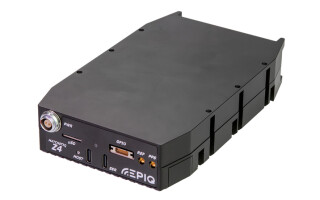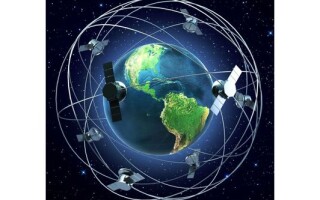GUEST BLOG: Harnessing AI for the next-generation tactical edge
BlogSeptember 09, 2024

In the ever-evolving landscape of modern warfare, the role of artificial intelligence (AI) in shaping the future of military operations cannot be underestimated. With the battlespace’s complexity escalating, the AI-accelerated battlespace’s emergence, enabled by advanced data-processing capabilities at the tactical edge, has become pivotal in assuring mission success. As the speed of warfare increases, we must recognize how edge-based compute technologies are crucial to increase the speed of decision-making.
Regarding AI, the U.S. Department of Defense (DoD) Chief Digital and Artificial Intelligence Office emphasized ensuring data, analytics, and AI capabilities are accessible across the DoD enterprise to support a variety of missions. Initiatives will be focused on leveraging mission analytics to drive decision-making behavior and ensuring data-driven capabilities are understandable and usable from the Pentagon to the battlefield.
Integrating AI and ML [machine learning] along with large language models (LLM) and multimodal large language models (MLLM) at the edge is a major step forward for military operations. The ability to process and analyze data in real time from a wide range of sensors at the point of collection empowers commanders with immediate insights, enabling swift and informed decision-making. Today’s operations require timely and accurate data that supports mission-critical decisions at the increasing speed of conflict. This edge-based approach is crucial in denied, disrupted, intermittent, and limited (DDIL) environments where traditional communication channels and cloud environments may be compromised or blocked.
The importance of data-rich processing solutions in DDIL environments cannot be overstated. These environments require systems that can handle complex data-processing tasks without the luxury of constant cloud connectivity. Future solutions will need to provide data center performance and flexible compute and networking capabilities at the tactical edge.
While the U.S. Army benefits from significant bandwidth and storage capabilities, the device ecosystem continues to grow exponentially, sometimes including field devices that are intermittently disconnected from the communications networks. The result: These communications resources can become scarce in field operations. Deployed systems, especially in remote geographical areas, frequently suffer from inadequate connectivity, necessitating data-rich processing solutions at the edge to ensure personnel can operate effectively in DDIL environments, where traditional communications and navigation systems may be unusable.
Missions, particularly those involving AI, ML, and video analysis, require dedicated graphics processing units (GPUs). Dedicated GPU design is tailored to handle the computationally intensive tasks efficiently. For instance, GPUs excel in processing large volumes of data with speed and precision, which is paramount for AI and ML algorithms to function effectively. The specialized architecture of GPUs enables them to perform complex calculations much faster than traditional CPUs.
Additionally, the success of such missions often hinges on the ability to process and analyze data swiftly and accurately. GPUs contribute considerably to these goals by providing the computational horsepower needed for rapid data processing, an especially critical aspect in scenarios where real-time data analysis is required. Leveraging the power of dedicated GPUs means that personnel on missions can achieve higher efficiency, better performance, and more accurate results in their AI, ML, and video-analysis endeavors.
To sum up: AI and ML play a crucial role in disconnected edge environments where communication with centralized command may be compromised or delayed. Implementing AI and ML capabilities at the edge enables military leaders to increase operational effectiveness by translating sensor data into decisions in real time. This move in turn results in increasing speed of decision-making and related mission effects that increase overall mission readiness.
Anthony Verna is SVP and GM of Cubic DTECH Mission Solutions.
Cubic DTECH Mission Solutions https://www.cubic.com/defense







